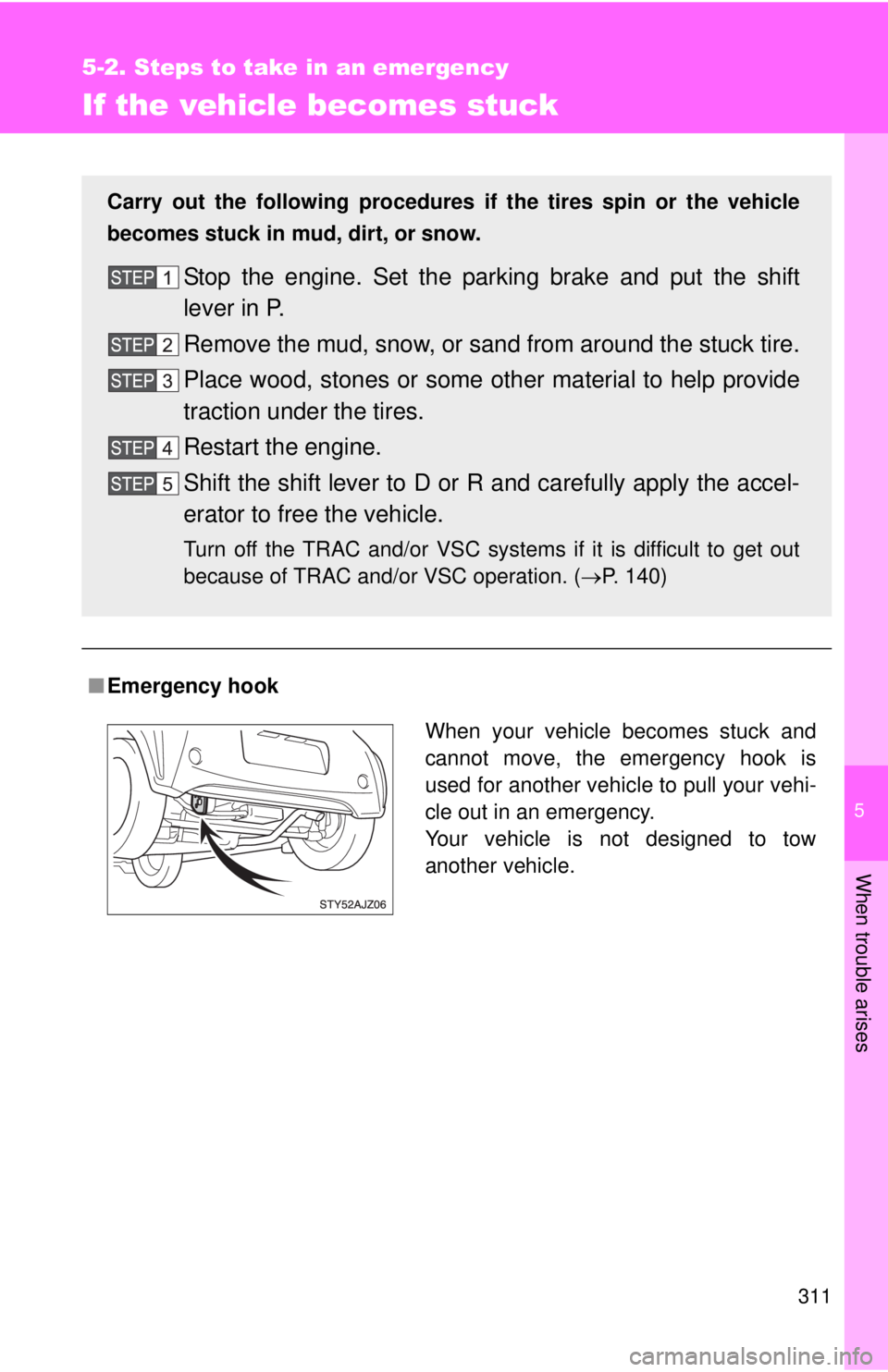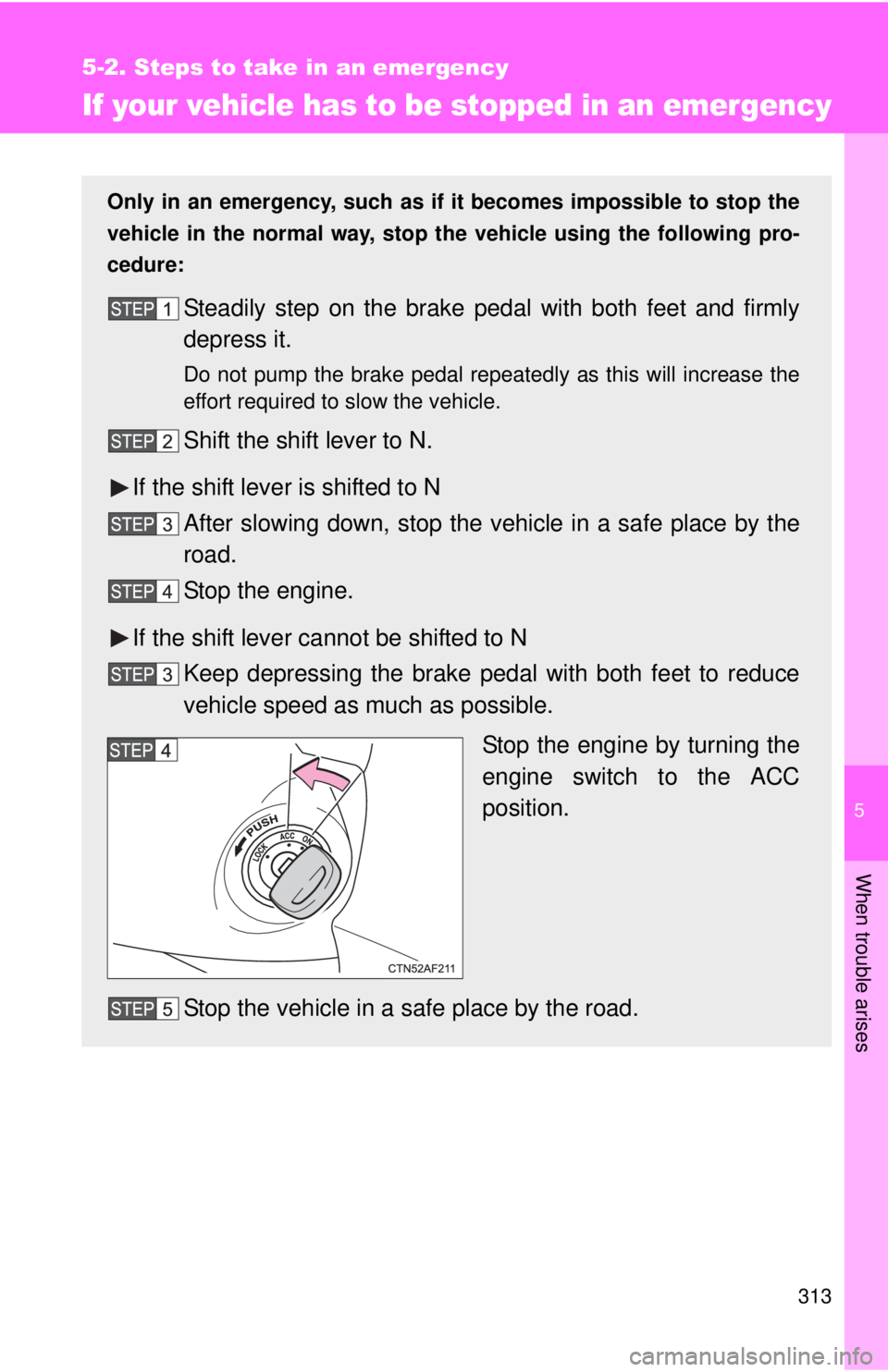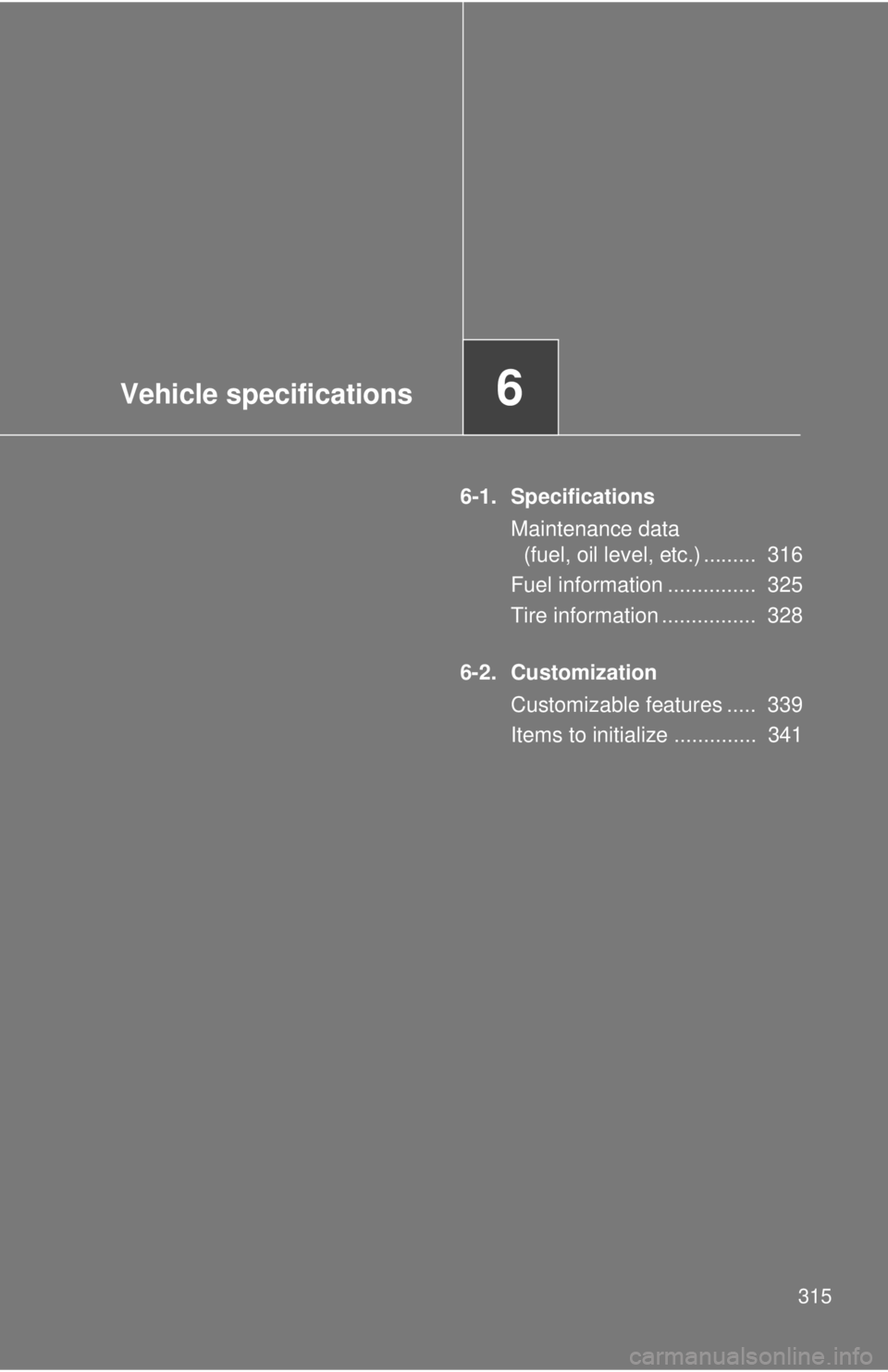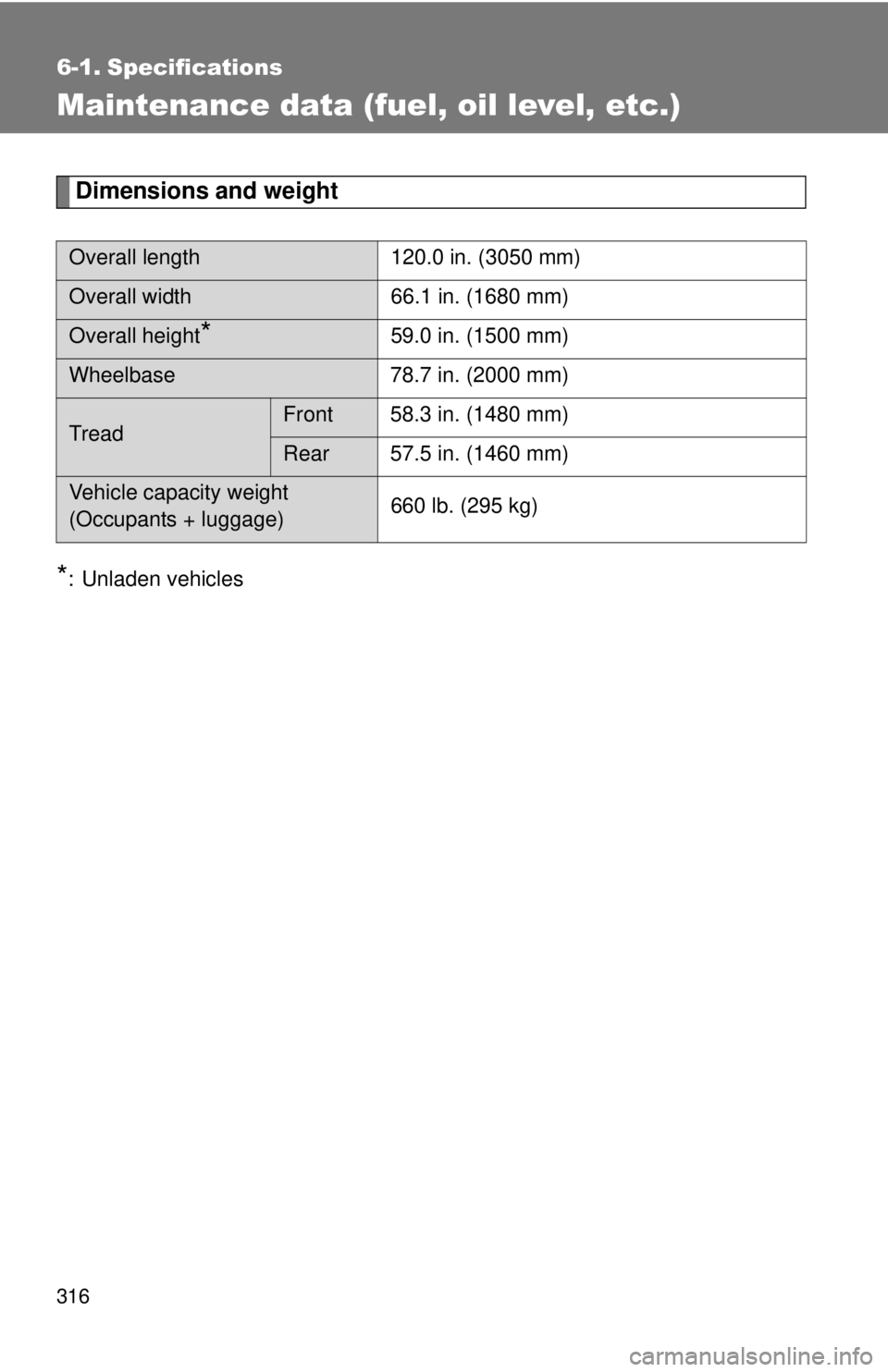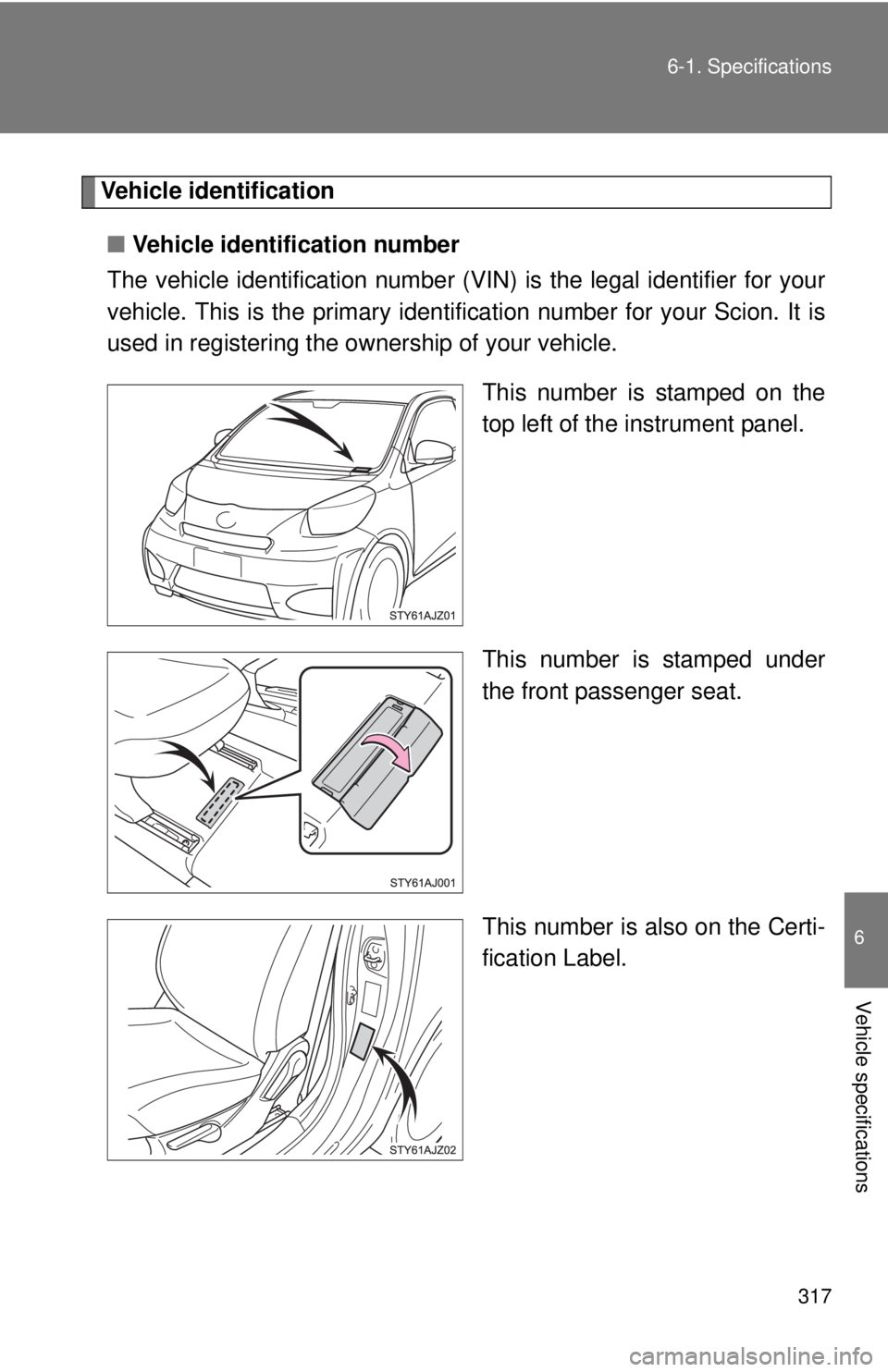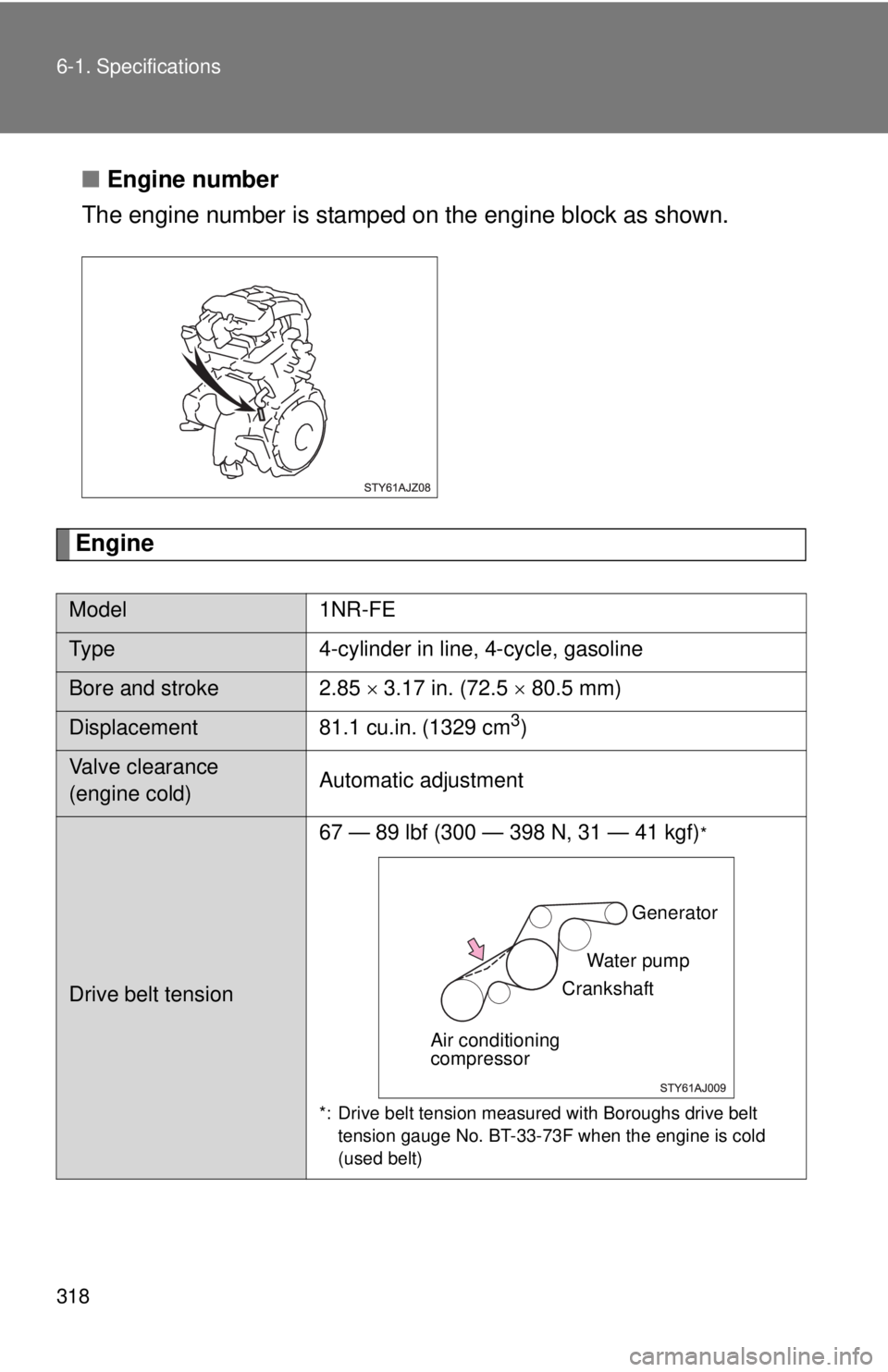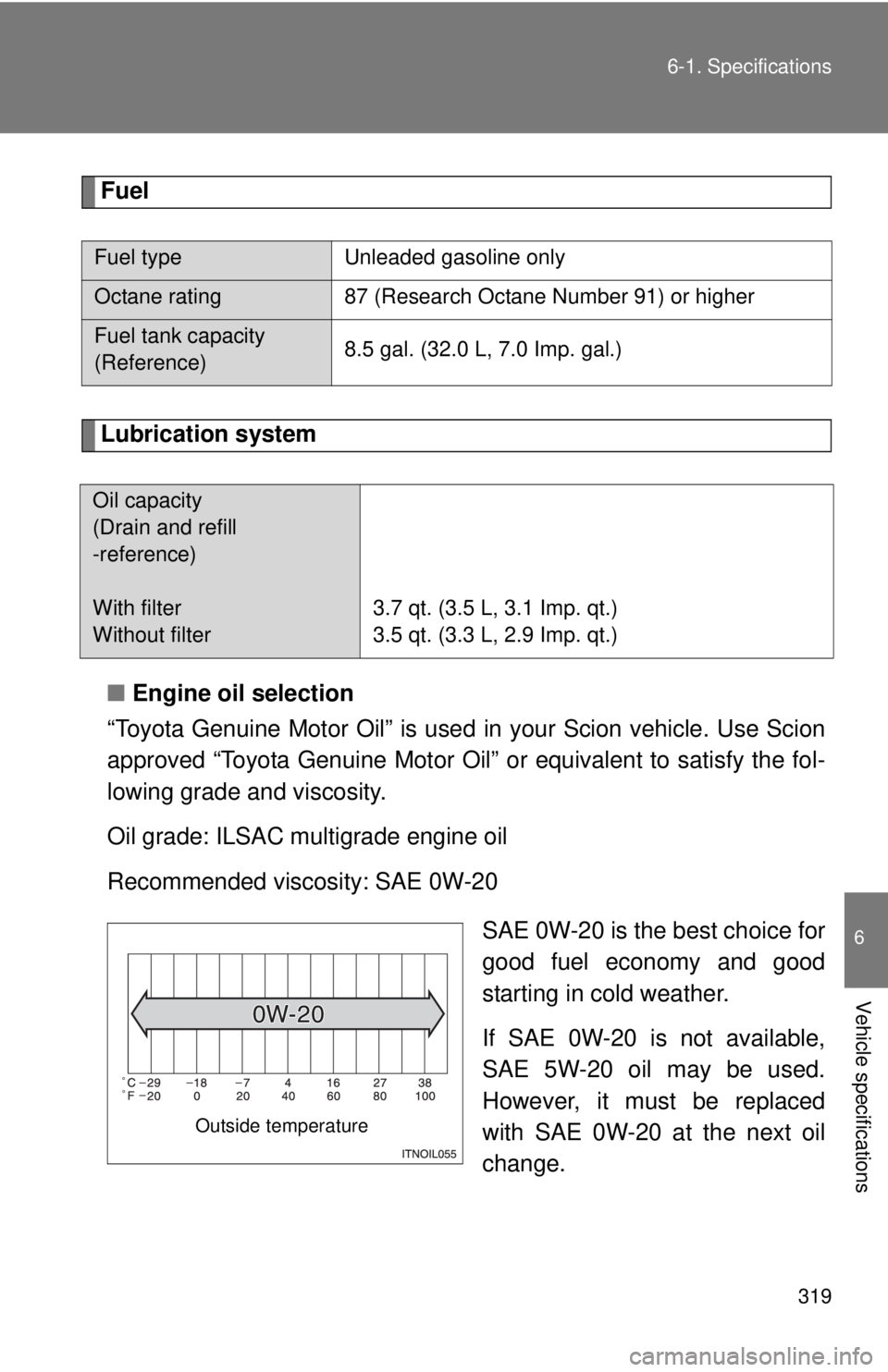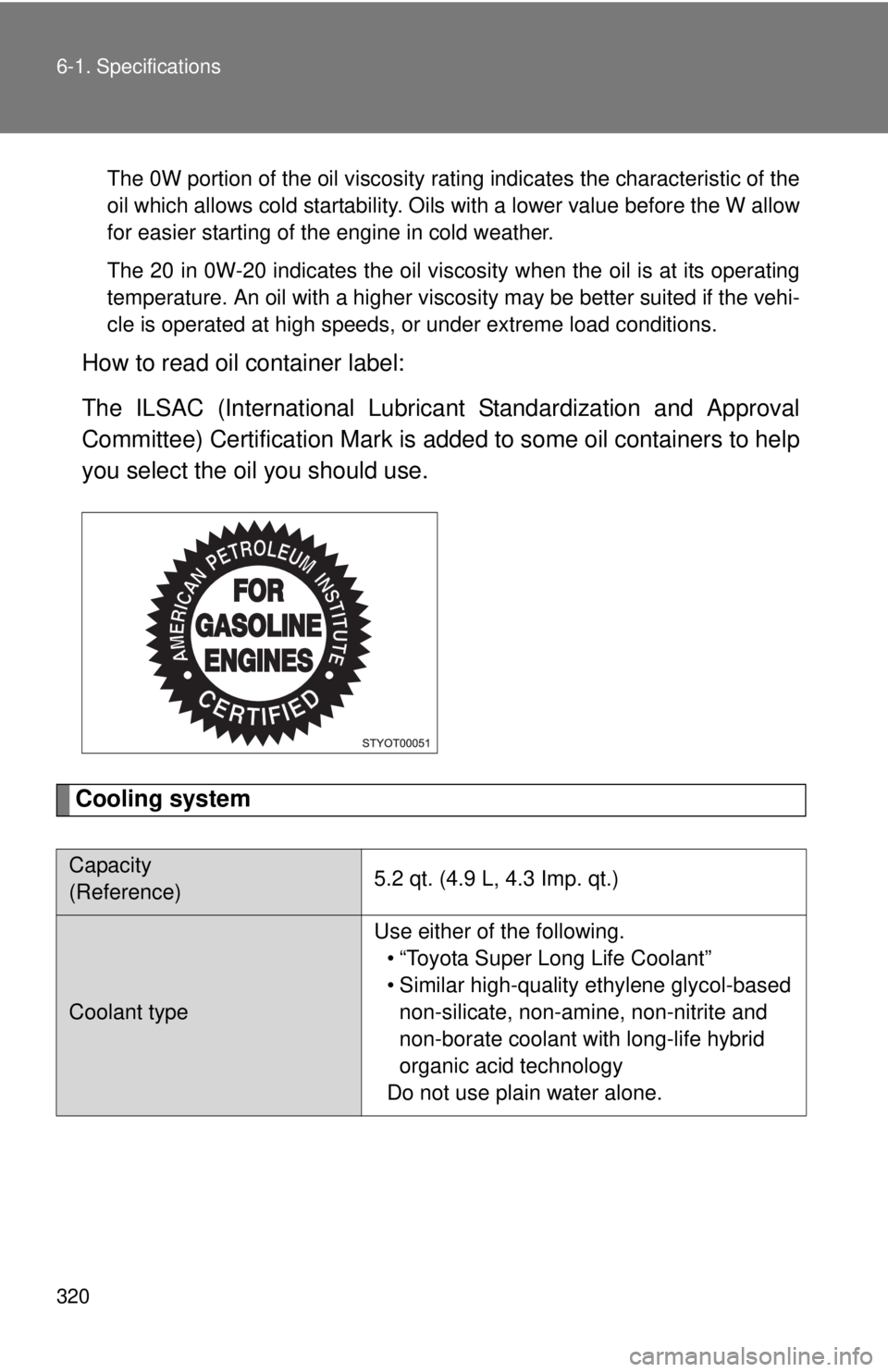TOYOTA IQ 2013 Owners Manual
Manufacturer: TOYOTA, Model Year: 2013,
Model line: IQ,
Model: TOYOTA IQ 2013
Pages: 372, PDF Size: 7.77 MB
TOYOTA IQ 2013 Owners Manual
IQ 2013
TOYOTA
TOYOTA
https://www.carmanualsonline.info/img/14/67074/w960_67074-0.png
TOYOTA IQ 2013 Owners Manual
Trending: service, coolant, hood open, engine coolant, wipers, warning light, clock
Page 311 of 372
5
When trouble arises
311
5-2. Steps to take in an emergency
If the vehicle becomes stuck
■Emergency hook
Carry out the following procedures if the tires spin or the vehicle
becomes stuck in mud, dirt, or snow.
Stop the engine. Set the parking brake and put the shift
lever in P.
Remove the mud, snow, or sand from around the stuck tire.
Place wood, stones or some other material to help provide
traction under the tires.
Restart the engine.
Shift the shift lever to D or R and carefully apply the accel-
erator to free the vehicle.
Turn off the TRAC and/or VSC systems if it is difficult to get out
because of TRAC and/or VSC operation. ( P. 140)
When your vehicle becomes stuck and
cannot move, the emergency hook is
used for another vehicle to pull your vehi-
cle out in an emergency.
Your vehicle is not designed to tow
another vehicle.
Page 312 of 372
312 5-2. Steps to take in an emergency
CAUTION
■When attempting to free a stuck vehicle
If you choose to rock the vehicle back and forth to free it, make sure the sur-
rounding area is clear, to avoid striking other vehicles, objects or persons.
The vehicle may also lunge forward or lunge back suddenly as it becomes
free. Use extreme caution.
■ When shifting the shift lever
Be careful not to shift the shift lever with the accelerator pedal depressed.
This may lead to unexpected rapid acceleration of the vehicle that may
cause an accident and result in death or serious injury.
NOTICE
■To avoid damaging the transmission and other components
●Avoid spinning the wheels and do not rev the engine.
● If the vehicle remains stuck after trying these procedures, the vehicle may
require towing to be freed.
Page 313 of 372
5
When trouble arises
313
5-2. Steps to take in an emergency
If your vehicle has to be stopped in an emergency
Only in an emergency, such as if it becomes impossible to stop the
vehicle in the normal way, stop the vehicle using the following pro-
cedure:
Steadily step on the brake pedal with both feet and firmly
depress it.
Do not pump the brake pedal repeatedly as this will increase the
effort required to slow the vehicle.
Shift the shift lever to N.
If the shift lever is shifted to N After slowing down, stop the vehi cle in a safe place by the
road.
Stop the engine.
If the shift lever cannot be shifted to N Keep depressing the brake pedal with both feet to reduce
vehicle speed as much as possible.
Stop the engine by turning the
engine switch to the ACC
position.
Stop the vehicle in a safe place by the road.
Page 314 of 372
314 5-2. Steps to take in an emergency
CAUTION
■If the engine has to be turned off while driving
●Power assist for the brakes and steering wheel will be lost, making the
brake pedal harder to depress and the steering wheel heavier to turn.
Decelerate as much as possible before turning off the engine.
● Never attempt to remove the key, as doing so will lock the steering wheel.
Page 315 of 372
Vehicle specifications6
315
6-1. SpecificationsMaintenance data (fuel, oil level, etc.) ......... 316
Fuel information ............... 325
Tire information ................ 328
6-2. Customization Customizable features ..... 339
Items to initialize .............. 341
Page 316 of 372
316
6-1. Specifications
Maintenance data (fuel, oil level, etc.)
Dimensions and weight
*: Unladen vehicles
Overall length120.0 in. (3050 mm)
Overall width66.1 in. (1680 mm)
Overall height*59.0 in. (1500 mm)
Wheelbase78.7 in. (2000 mm)
TreadFront 58.3 in. (1480 mm)
Rear 57.5 in. (1460 mm)
Vehicle capacity weight
(Occupants + luggage) 660 lb. (295 kg)
Page 317 of 372
317
6-1. Specifications
6
Vehicle specifications
Vehicle identification
■ Vehicle identification number
The vehicle identificati on number (VIN) is the legal identifier for your
vehicle. This is the primary identifi cation number for your Scion. It is
used in registering the ownership of your vehicle.
This number is stamped on the
top left of the instrument panel.
This number is stamped under
the front passenger seat.
This number is also on the Certi-
fication Label.
Page 318 of 372
318 6-1. Specifications
■Engine number
The engine number is stamped on the engine bl ock as shown.
Engine
Model1NR-FE
Type 4-cylinder in line, 4-cycle, gasoline
Bore and stroke 2.85 3.17 in. (72.5 80.5 mm)
Displacement 81.1 cu.in. (1329 cm3)
Valve clearance
(engine cold) Automatic adjustment
Drive belt tension67 — 89 lbf (300 — 398 N, 31 — 41 kgf)
*
*: Drive belt tension measur ed with Boroughs drive belt
tension gauge No. BT-33-73F when the engine is cold
(used belt)
Generator
Water pump
Air conditioning
compressor Crankshaft
Page 319 of 372
319
6-1. Specifications
6
Vehicle specifications
Fuel
Lubrication system
■ Engine oil selection
“Toyota Genuine Motor Oil” is used in your Scion vehicle. Use Scion
approved “Toyota Genuine Motor Oil” or equivalent to satisfy the fol-
lowing grade and viscosity.
Oil grade: ILSAC multigrade engine oil
Recommended viscosity: SAE 0W-20
SAE 0W-20 is the best choice for
good fuel economy and good
starting in cold weather.
If SAE 0W-20 is not available,
SAE 5W-20 oil may be used.
However, it must be replaced
with SAE 0W-20 at the next oil
change.
Fuel typeUnleaded gasoline only
Octane rating87 (Research Octane Number 91) or higher
Fuel tank capacity
(Reference) 8.5 gal. (32.0 L, 7.0 Imp. gal.)
Oil capacity
(Drain and refill
-reference)
With filter
Without filter 3.7 qt. (3.5 L, 3.1 Imp. qt.)
3.5 qt. (3.3 L, 2.9 Imp. qt.)
Outside temperature
Page 320 of 372
320 6-1. Specifications
The 0W portion of the oil viscosity rating indicates the characteristic of the
oil which allows cold startability. Oils with a lower value before the W allow
for easier starting of the engine in cold weather.
The 20 in 0W-20 indicates the oil viscosity when the oil is at its operating
temperature. An oil with a higher viscosity may be better suited if the vehi-
cle is operated at high speeds, or under extreme load conditions.
How to read oil container label:
The ILSAC (International Lubricant Standardization and Approval
Committee) Certification Mark is added to some oil containers to help
you select the oil you should use.
Cooling system
Capacity
(Reference) 5.2 qt. (4.9 L, 4.3 Imp. qt.)
Coolant typeUse either of the following.
• “Toyota Super Long Life Coolant”
• Similar high-quality ethylene glycol-based non-silicate, non-amine, non-nitrite and
non-borate coolant with long-life hybrid
organic acid technology
Do not use plain water alone.
Trending: air suspension, display, automatic transmission fluid, child seat, Seat d, fuel filter, service schedule
